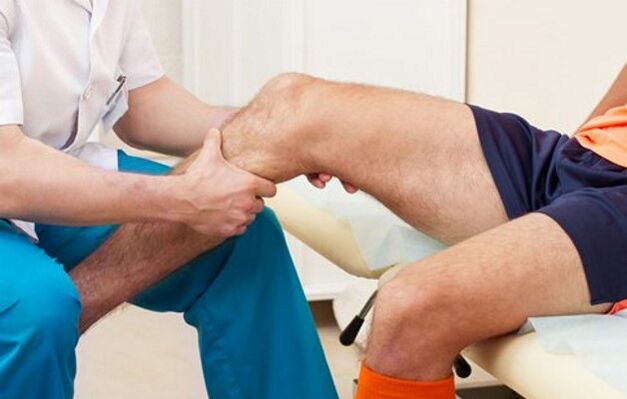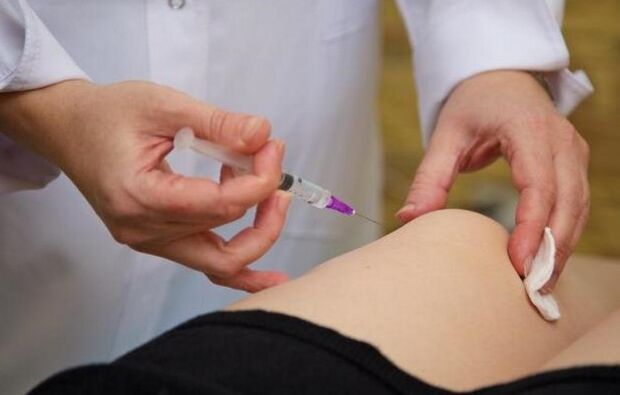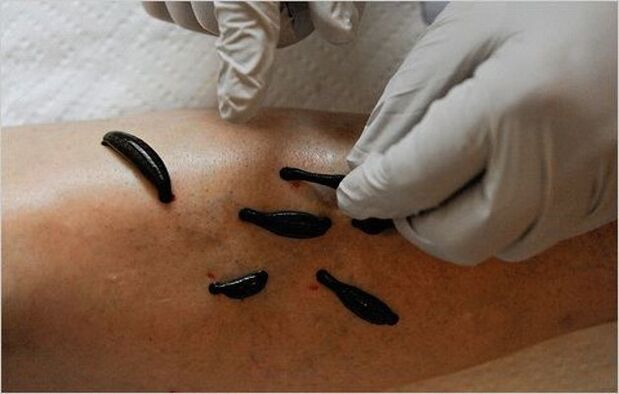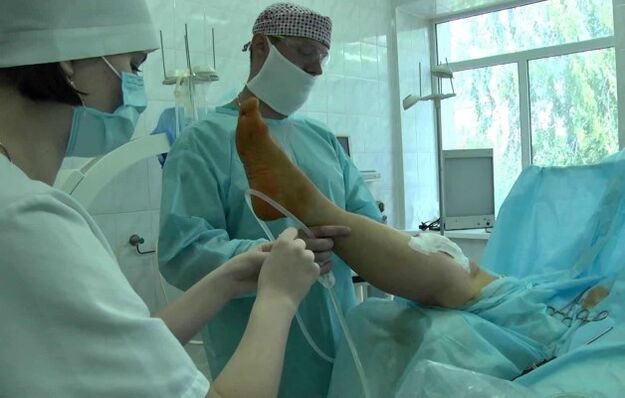Arthrosis of the knee (gonarthrosis) is a chronic disease caused by degenerative changes in the cartilage tissue. The disease seriously disrupts the usual rhythm of life, causing severe pain and limiting mobility. Medical treatment of arthrosis of the knee joint helps to stop pain and stop degenerative processes in the early stages of the disease. At a later date, the problem is solved with the help of an operation.
Treatment of arthrosis with conservative methods
Therapy of gonarthrosis is carried out in a comprehensive manner and includes taking medications, physiotherapy, massage, exercise therapy. Medications relieve pain, improve blood circulation, and promote tissue regeneration.
In the course of treatment, they use:
- pills;
- creams;
- gels;
- injections.
Modern medicine is developing new methods of treating gonarthrosis. Stem cell therapy and platelet-rich plasma therapy are effective methods. Doctors point to the high efficiency of treatment and rapid tissue regeneration.

Pain relievers and anti-inflammatories
The choice of drugs for arthrosis depends on the degree of the disease, the characteristics of the organism and associated pathologies. At the 1st degree of the disease, a person feels a little discomfort after prolonged exertion, dystrophic processes are just beginning in the cartilaginous tissue. Treatment is carried out using topical ointments. For discomfort and minor pain, it is recommended:
- do gymnastics;
- reduce stress on the joint;
- take vitamin complexes;
- follow a diet.
The main drug therapy is used for the 2nd degree of the disease. A person begins to experience pain, a crunch is heard when walking, the cartilaginous tissue becomes thinner, the range of motion is limited. The goal of treatment is to relieve pain, stop destructive processes in the joint, and restore leg mobility.
To relieve pain, non-steroidal anti-inflammatory drugs (NSAIDs) are used, which give an analgesic effect and relieve inflammatory processes in the tissues.
On a note.Long-term use of these drugs negatively affects the gastrointestinal tract and liver.
Today, doctors are increasingly prescribing "new generation" NSAIDs that can be used for a long time and have minimal side effects.
If an infectious disease joins the arthrosis, the doctor may prescribe antibiotics. In order to choose the right drug, the causative agent of the infection is identified. To do this, take fluid from the articular cavity and place it in a nutrient medium. Based on the results of the analysis, the doctor prescribes a drug.
Chondroprotectors
The main group of drugs in the treatment of arthrosis is chondroprotectors. They are applied in a long course and are well accepted by the body. Thanks to active substances, they stop destructive processes in the cartilaginous tissue, improve the production of synovial fluid, and promote tissue regeneration.
On a note.Medicines are effective in the first two degrees of gonarthrosis. In the third, the cartilaginous tissue is destroyed and cannot recover on its own.
The most suitable drug will be selected by a specialist.
On a note.Medicines are available in the form of tablets and injection solutions. The second form is the most effective. The therapeutic effect begins within a few minutes, bypassing the absorption process through the gastrointestinal tract.
Complementary therapy
Together with chondroprotectors, drugs are prescribed that help improve metabolic processes, blood supply, and enrich the body with vitamins. For complex therapy, the following drugs are used:
- Muscle relaxants - eliminate spasms of smooth muscles, reduce pain;
- Venotonics and vasodilators improve blood flow and tissue trophism around the joint;
- Vitamin complexes saturate the body with the necessary substances, have a positive effect on metabolic processes, and improve overall well-being.
- Local remedies in the form of a cream, ointment and gel improve blood circulation in the knee joint, have a warming and decongestant effect, and eliminate pain.
- Compresses with medications are more effective than creams.
Intra-articular injections
Therapy for gonarthrosis is carried out by another method - injections into the joint. In medicine, this method of administering drugs is called a blockade. Depending on the drugs used, the injection helps to effectively stop the pain syndrome when other means do not help, quickly eliminate inflammation, and create a protective layer that protects the cartilaginous tissue from further destruction.
On a note.The sequence of treatment is determined by the doctor. Hyaluronic acid preparations are administered only after the inflammatory process has been removed, otherwise the course of the disease can be aggravated.

Stem cell and plasma therapy
Modern methods of dealing with gonarthrosis are based on low invasiveness and a reduction in the recovery period. Such procedures include stem cell therapy, which, after injection, are capable of transforming into cells of cartilage tissue, contributing to its regeneration. The material for the procedure is obtained from embryos and adipose tissues, bone marrow of an adult.
The procedure helps:
- eliminate pain;
- relieve swelling;
- restore motor functions;
- improve joint nutrition;
- speed up metabolic processes.
The taken stem cells are grown in laboratory conditions, injected into the patient's joint. The procedure is performed under local anesthesia.
On a note.Therapy is carried out only when there is still cartilaginous tissue and synovial fluid is being produced. At grade 3 of the disease, treatment will not bring positive results.
A new method of treating arthrosis is the administration of platelet-rich plasma. The procedure is simple:
- blood sampling from the patient;
- blood is placed in a test tube and centrifuge, where it is divided into erythrocytes, plasma with platelets;
- only platelet worries are produced;
- the drug is injected into the knee.
With an increased number of platelets, enhanced regeneration of cartilage tissue begins. For treatment, it is necessary to perform from 2 to 5 procedures, between which there is a break of 7 days.
Other treatments
In the fight against gonarthrosis, people use various traditional and non-traditional methods, one of which is hirudotherapy (leech therapy). The saliva of worms contains many enzymes that are beneficial to humans. It allows you to:
- reduce blood viscosity, thereby improving blood circulation;
- relieve pain syndrome;
- improve metabolic processes.
On a note.Doctors compare the effect of leech saliva with chondroprotectors. It speeds up the process of cartilage repair. In the early stages, the patient is completely cured.
Hirudotherapy is prescribed with caution to elderly people and children. The procedures are contraindicated for pregnant women, patients with poor blood clotting and heart failure.
For arthrosis of the knee, applications with ozokerite (black wax), a waxy mass consisting of paraffin and resins, are no less effective. It is used for inflammatory and degenerative processes in cartilaginous structures. It has a thermal, analgesic, regenerating effect on a diseased joint.
Ozokerite is used as compresses and applications. The course of treatment should consist of at least 15 daily sessions.
Electrophoresis with drugs is no less effective. During the session, the drug penetrates deeply into the diseased areas, bypassing the stomach and liver. This reduces the intake of medications, and the effect of the procedure is more pronounced.

At home, you can use a special device. The device, when used locally, is exposed to UV radiation, heat. As a result, blood circulation, tissue trophism improves, biochemical reactions in the skin are activated. Positive feedback from patients confirms the effectiveness of the procedures.
Operational methods
Surgical intervention is usually used at grade 3 and 4 of the disease, when the heads of the bones are practically bare and conservative therapy cannot give positive results.
With gonarthrosis, several types of operations are performed:
- Arthrodesis - remove the remaining cartilage along with the joint. It is rarely used, since it does not allow to maintain the mobility of the limb.
- Arthroscopic debridement - the release of the joint from the cartilage tissue using an arthroscope. The procedure is used to relieve pain and is a temporary solution to the problem.
- Endoprosthetics is the most common and effective method of surgical intervention for gonarthrosis. It allows the joint to remain mobile. Modern prostheses are made in accordance with the individual characteristics of the patient. This allows the implant to quickly take root in the body without causing discomfort to the patient.
Joint replacement surgery is performed under general anesthesia. Surgeon:
- Makes a longitudinal incision at the central part of the knee, pushes the tissue apart.
- It processes the damaged fragments of the bone surface (grinding), installs a prosthesis (artificial cartilage), tests.
- Fixes by cementation or tight fit.
- Sutures the wound, applies a bandage and splint.
The whole operation takes 2-3 hours. The recovery period lasts about 4 months. The patient first learns to walk, gradually loading and strengthening the muscles. Exercise therapy, massage, swimming are recommended. The healing effect lasts up to 20 years, then a new replacement of the prosthesis is necessary, because over time it wears out.

Gonarthrosis is a chronic disease that can be successfully treated at an early stage. Even small symptoms cannot be ignored - you need to immediately start complex therapy in consultation with your doctor. In severe cases, only joint replacement can help avoid disability. Preventive measures include diet, vitamins, exercise, and moderate knee stress.












































